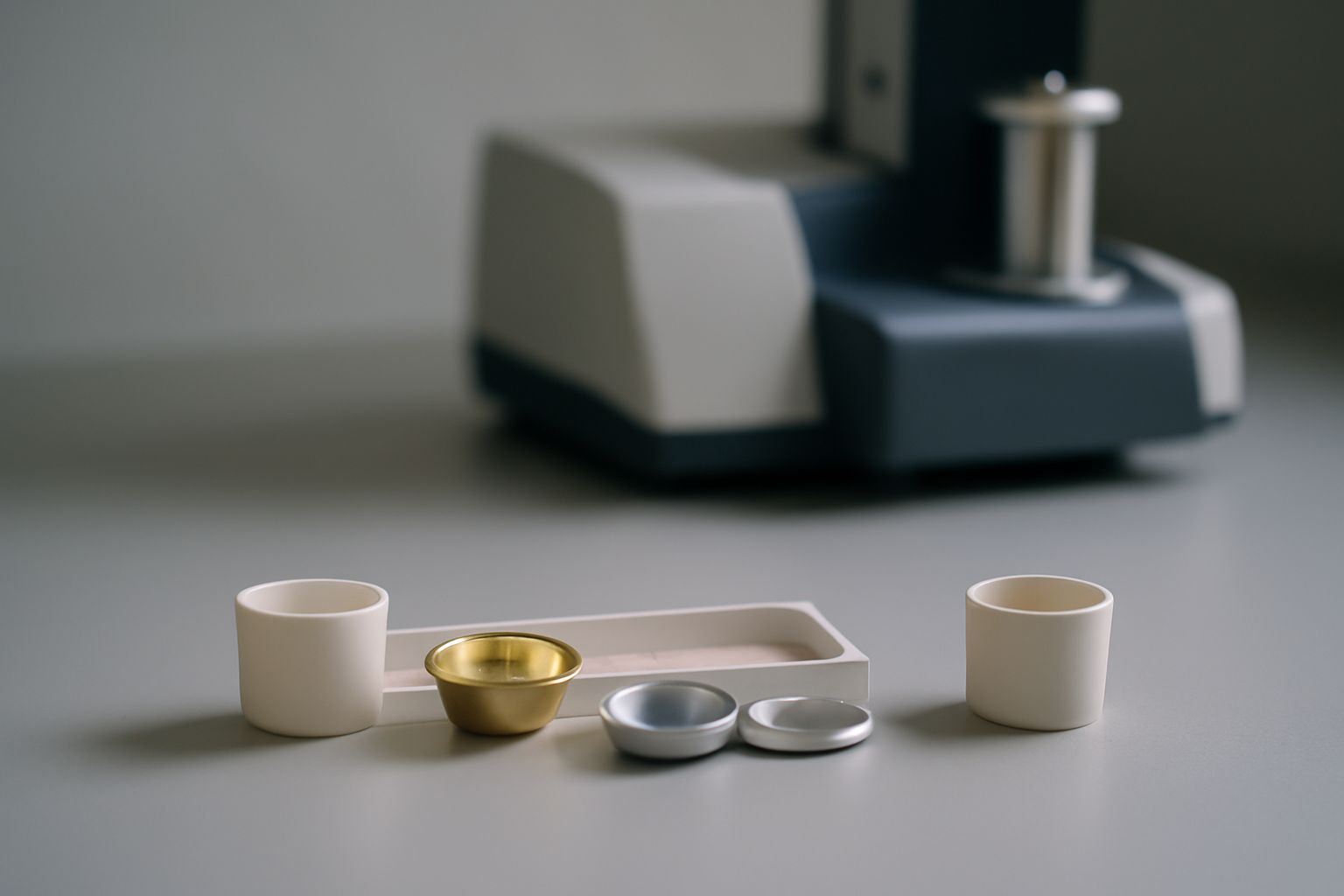Your cart is empty.
shop now
Your cart is empty.
shop now
Making the wrong choice in crucibles can ruin data or cause repeated testing. Every material and method needs its own best-fit crucible for reliable thermal analysis.
To pick the right DTA crucible, focus on your test goal. Match the crucible material and design—like platinum for high heat, aluminum for polymers, or sealed pans for pharmaceuticals—to your exact sample and method.

I have seen labs waste days with the wrong crucible. Using tailored solutions for each application makes projects faster and boosts confidence in every test. Once you start matching crucible to scenario, troubleshooting and reporting become clearer and more productive for the whole lab.
High temperatures can destroy standard crucibles and give bad results. Many labs struggle to keep consistent data at extreme heat.
Platinum and alumina crucibles work best for high-temperature analysis. These materials have high melting points and resist chemical attack, even at 1600°C.
| Material | Max Temperature | Main Benefit | Best For | Reference |
|---|---|---|---|---|
| Platinum | 1600°C | High stability, low reactivity | Metals, refractory material | platinum |
| Alumina (Al₂O₃) | 1500°C | Chemical resistance, cost-efficient | Oxidizing/test atmospheres | alumina |
I tried using standard aluminum pans at high heat and saw melting and contamination. Since switching to platinum or alumina, my high-temp results have stayed sharp and repeatable.
Polymers can stick, deform, or absorb heat unevenly. The wrong pan distorts analysis and wastes sample runs.
Aluminum crucibles are a top choice for polymer testing. They offer excellent thermal conductivity and work with most automated DTA systems, making melting point and composition checks reliable.
| Crucible Material | Key Feature | Why Use | Reference |
|---|---|---|---|
| Aluminum | Great heat transfer | Delivers accurate, flat baselines | aluminum |
| Sealed Aluminum | Prevents loss of volatiles | Keeps sensitive samples consistent | heat of vaporization |
Switching to high-purity and sealed aluminum pans cut noise in polymer analysis and gave results that matched published values, even across multiple users and machines.
Many pharmaceuticals are sensitive to air or moisture. An open pan lets in contaminants and causes sample loss or errors.
Sealed crucibles are preferred in pharmaceuticals. They prevent outside contamination and keep the sample’s original moisture and mass steady during heating cycles.
| Crucible Type | Application Need | Why It Works | Reference |
|---|---|---|---|
| Sealed Aluminum | Isolate from the environment | Keeps sample pure and stable | moisture sensitivity |
| Gold-Coated Pans | Enhance chemical stability | Shields reactive drugs from oxidation | gold |
I shifted to using sealed and even gold-coated pans for tests of sensitive drug compounds. The drop in noise and sample loss was obvious, and QC teams trusted the data more.
Semiconductor samples need tight measurement and perfect sealing. Any mismatch means data drift or even device failure.
Pick crucibles with narrow diameters, smooth walls, and high sealing capacity. High-purity alumina or platinum, and exact-fit lids, give the clearest signals in electronic material DTA.
| Requirement | Crucible Property | Testing Benefit | Reference |
|---|---|---|---|
| Narrow Diameter & Lid | Seals tightly | No contamination, high repeatability | semiconductor device |
| High Purity | Low signal noise | Better measure of fine transitions | high purity |
| Smooth, Strong Walls | No microcracks | No leaks or signal drift | sintering |
I tested power transistors with general pans before. I noticed higher failure rates and unclear results. After using high-purity alumina with tight-fitting lids, outcomes were much more stable and accepted by our device teams.